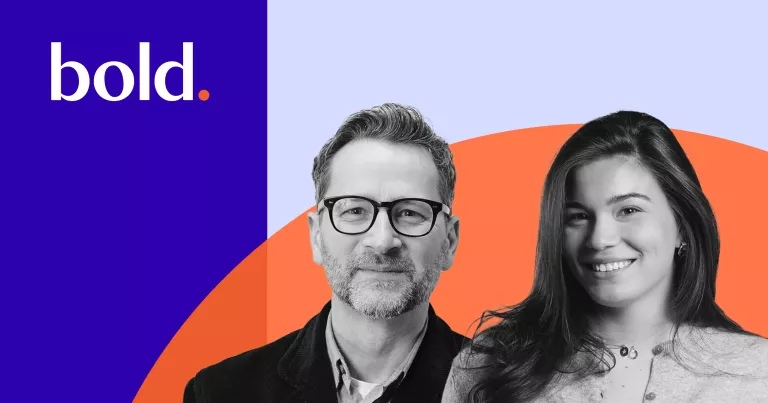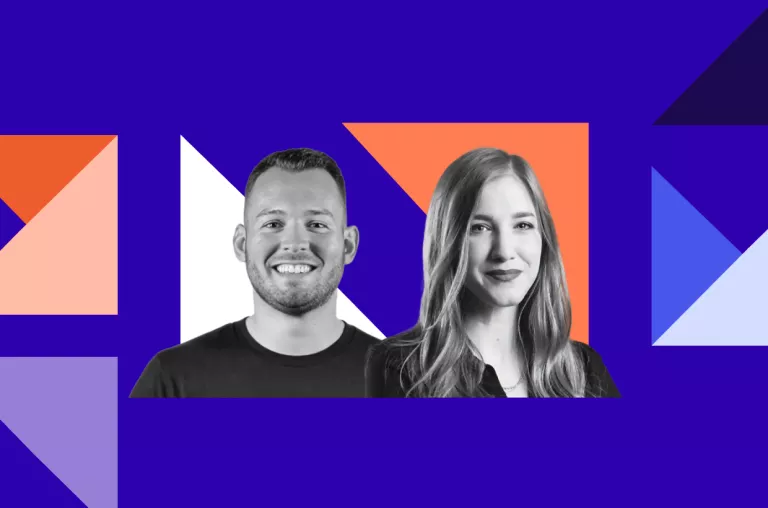Bold Session Recap – Elevating Lead Generation Strategies by Leveraging Partnerships

In a recent Bold session, we explored the art of maximizing partnerships for pipeline growth and securing new deals with Nick Dan-Bergman, VP of Marketing and Partnerships at LT.
With nearly a decade of experience spearheading business development and marketing initiatives, Nick has implemented a number of successful partnership strategies. Below, we bring you the most frequently asked questions that Nick answered during the session.
How would you define partnerships as a marketing strategy or channel?
Well, for us, there’s two main categories when talking about partnerships. The first category is a tech partnership and the second one is something we call a thought leadership or research partnership.
A tech partnership is something we’ve been doing longer. It usually comes down to being a part of a partner program for a, let’s say, CMS provider or even hosting providers like WordPress. The good side of tech partnerships is that they’re established programmes and it makes the whole thing a lot easier. The downside is that, if you’re not one of their top partners, you get pushed to the side and kind of ignored. They like you, but you don’t really get the full love from them since you’re not driving revenue as much as other companies.
A research partnership is an area that has been in our focus more recently. I’d say we’ve seen a lot more success in this area. This could be anything from partnering with an association in a given industry to partnering with a certain publication from an industry or an analyst. I think this area is a bit on the unexplored side of things, established programmes are going to be a rare occurrence, so you kind of have to figure things out as you go. There might not be any clear guidelines or beaten paths when partnering with someone on matters like these, but if you can do it right – it can be really fruitful.
Let’s say an agency is considering a partnership. Where should they start?
Probably the first thing to do is just to assess where you’re currently at and giving an honest assessment of where (whether it be industries or technologies) you truly are an expert. So, when I look at partnerships, and when you’re reaching out to a tech company or a research and thought leadership groups, I think you want to make sure that it’s an easy conversation for you to have.
We started investing into this five years ago and about two years ago we is when we really started robust growth from it. Don’t get me wrong, we didn’t do it for three years without seeing any return, but it’s a little bit slower in the beginning. You should start doing the work on your own, even before you have a designated partnership.
If you have an opportunity to establish a partnership from the get go, by all means, go for it, but in a lot of cases there’s work to be done beforehand. That makes it easier to establish partnerships with with bigger associations.
What needs to be considered when looking for a partner?
Well, apart from knowing your own expertise, it’s important to identify the mindset of your potential partner. I think that the partner should have some form of skin in the game. On the tech partnership side of things, those partnerships would usually involve some kind of referral agreement – you put in the work, you get compensated.
On the other side, research and thought leadership partnerships are a bit more complicated. You’re probably not going to be able to establish agreements since associations or analysts can’t take any form of compensation. So you have to figure out what motivates them, what’s in it for them, and how to get them to have a stake in the matter.
In the case where we’re jointly doing consumer research and publishing a report and they’re not putting money into the research – get them to agree to launch the report at one of their events.
Could you share a few best practices agencies should take into consideration when thinking about a partnership?
The biggest issue regarding partnerships is getting your foot in the door in the first place. Getting the conversation going is where it all starts, so figuring out who the best person is to do it and make a connection is crucial. I’ve been working on figuring out who we need to outreach to, how we should do it and what value they might get out of it.
How do you manage expectations during a partnership?
So the way I see it is, if we’ve established a partnership with an association we’re going to go at it at 110%, right? We’re going to go above and beyond to make things work. Good enough isn’t going to cut it if you’re going to have the top industry people reading the report. Even when you think you’re done, try and make it a little bit better.
It’s really important to manage your team’s expectations of what success looks like as well, especially when you’re doing a partnership that will result in a high-value piece of content. You’re always going to have partnerships that don’t continue and you might not get the full reason behind it, that’s just how things go sometimes.
What are some best practices when it comes to coordinating brand messaging?
We’re really flexible when it comes to that, especially knowing that some of our partners have to follow very strict rules when it comes to branding. If you’re working with an investment bank or anyone in the financial sector for that matter, you can expect that every little detail will be scrutinized. And it makes sense, they’re under a lot of regulations so you can’t put just anything out there.
Not all of your partners will be like this, but ultimately, you’re looking to get in front of a bigger audience that your partners have access to. We’ve done reports that were entirely in alignment with brand guidelines from our partner’s side, but we’ve also done some where they just wanted their logo on the report.
My advice would be to stay as flexible as possible.
How would you decide if a partnership is successful? Which KPIs should be monitored in regards to ROI?
In terms of revenue, I’d say you should have at least some revenue generated within the first year of the partnership. But that’s not the only thing you should be looking out for. If you have a research partnership, then getting involved in your partners ecosystem – doing events, speaking at conferences or webinars, etc. will also increase the likelihood of success. The more entrenched you can become with the group you’ve partnered with, the better.
So, you’re obviously going to be looking at the deals and revenue you’ve made from those deals. We also like to look at the number of people that reach out, not regarding a specific project. Potential leads might reach out regarding the report, they might not need your services at that exact time – which doesn’t mean they won’t need them somewhere down the line.
Another thing is building relationships with C-suites. Things move faster when you’re talking to the CEO or president of the company, there’s generally less details discussed and you get straight to the point. Most of the times you won’t be doing your standard pitch. The CEO lays out a problem they’re facing and you come up with a creative solution. It’s challenging, but this approach makes it easier to put the deal pen to paper.
Connect With Agency Peers
Access agency-related Circle channels, exchange business insights, and join in on members-only live sessions.




